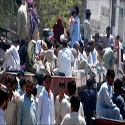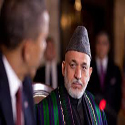People who are displaced from Swat due to military operation have been brought by the bus load to Karachi.
Why they were brought to Karachi? Like many other people I asked the same question to myself.
During the Afghan/Russian war all the displaced people were inhabited within the NWFP. Why this time when the displaced people were much lower in numbers were transported to Karachi. It seems it was preplanned with a hidden agenda.
I can think there were three motives behind this move.
Political. Pakistan Peoples Party wants to reduce the power of MQM in Karachi by







